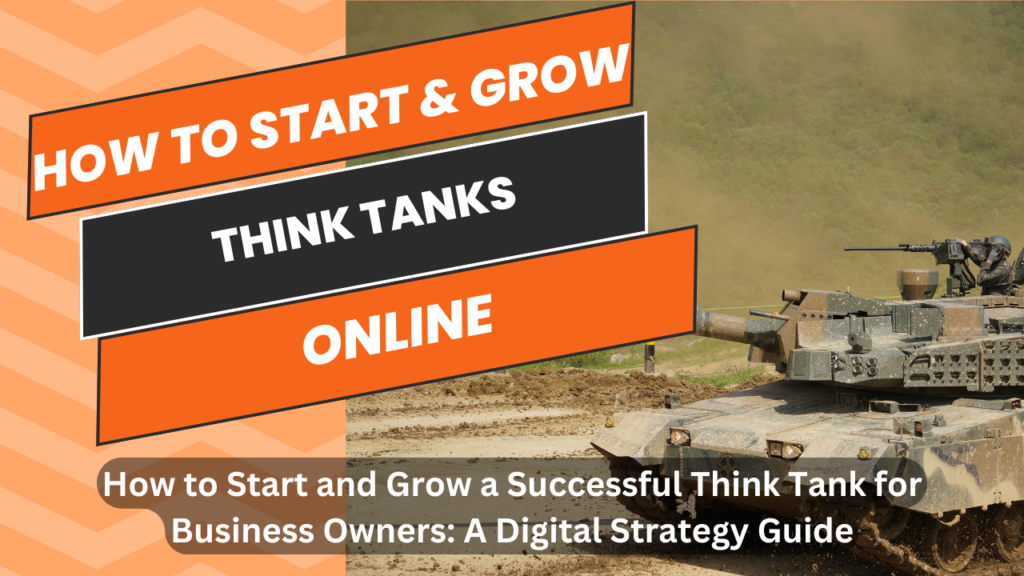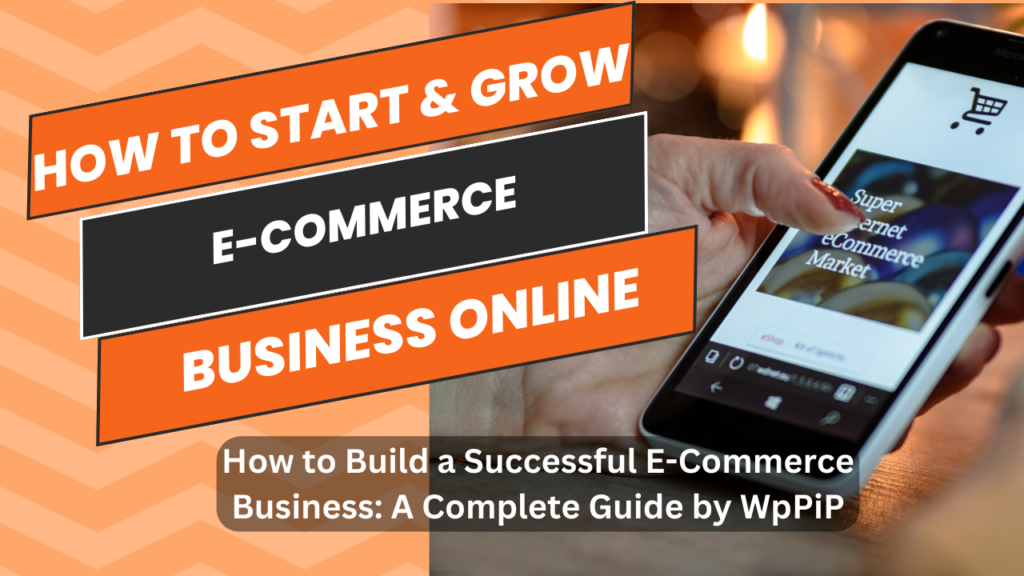Launching and Expanding a Thriving Think Tank: A Digital Blueprint for Entrepreneurs
In today’s fast-paced business environment, think tanks play a crucial role in helping businesses solve complex problems, generate innovative ideas, and shape future strategies. For business owners, starting and growing a think tank can be a highly rewarding venture, not only in terms of impact but also in providing a platform for growth, collaboration, and leadership. However, to make a think tank successful, you must be equipped with the right digital strategies. This is where having a strong online presence, backed by expert web development, digital marketing, and video content, becomes essential.
In this comprehensive guide, we will walk you through the key steps to launch and grow a think tank aimed at business owners, with an emphasis on the digital strategies that will help you reach and engage your target audience. From creating an appealing website to implementing effective social media marketing and using video content, we will show you how to position your think tank for success in the digital age. Along the way, we will highlight how WpPiP, your go-to partner for web development, digital marketing, and video editing, can help you achieve your digital growth goals.
Step 1: Establishing the Foundation of Your Think Tank
Before diving into the digital strategies, it is crucial to first lay a strong foundation for your think tank. A think tank is typically a research institute or a platform where experts and business owners collaborate to discuss key issues, generate solutions, and foster innovation. You will need to:
- Define your niche: Identify the specific business problems your think tank will solve. Whether it’s leadership, innovation, technology, or market trends, having a clear focus will help you target the right audience.
- Form a team of experts: Bring together thought leaders, industry professionals, and business owners who can contribute valuable insights and ideas. The credibility of your think tank will depend on the strength of your team.
- Create a mission statement: Define the vision and purpose of your think tank. This will serve as your guiding principle and help keep your initiatives aligned with your goals.
Once you have your think tank’s mission and team in place, it’s time to turn your attention to building an online presence that will support your growth and help you connect with your target audience.
Step 2: Developing a Visually Appealing Website
A visually appealing and user-friendly website is essential for any business or think tank. It serves as the digital storefront and the primary hub for information. Here are some key tips for creating a website that captivates and engages visitors:
- Professional Web Design: Your website should reflect the professionalism and credibility of your think tank. Choose a clean, modern design that aligns with your mission and resonates with your target audience. A clutter-free layout with intuitive navigation will ensure that users can easily find the information they need.
- Responsive and Mobile-Friendly: With the majority of online traffic coming from mobile devices, it’s crucial that your website is responsive. This means it should adapt seamlessly to various screen sizes, from desktops to smartphones.
- Compelling Branding: Your website should feature strong branding elements, including your logo, color scheme, and typography. Consistency in branding will help establish your think tank’s identity and make it more memorable to your audience.
- Clear Call-to-Actions (CTAs): Encourage visitors to take action, whether it’s signing up for your newsletter, attending an event, or contributing to a discussion. Place CTAs prominently on each page to guide users through the desired actions.
- Showcase Thought Leadership: Dedicate a section of your website to blog posts, articles, research papers, and case studies. This content will not only help establish your think tank as a thought leader in its field but also improve your website’s SEO ranking, making it easier for users to find you online.
At WpPiP, we specialize in web development that is tailored to the needs of think tanks. Our team can create a custom website for your think tank that is both visually appealing and functional, helping you make a lasting impression on your audience.
Step 3: Implementing Effective Digital Marketing
Once your website is up and running, the next step is to implement a robust digital marketing strategy to attract and engage potential members, clients, and collaborators. Effective digital marketing strategies will help you expand your reach and grow your think tank in the competitive online space.
1. Search Engine Optimization (SEO)
To ensure your think tank’s website ranks high on search engine results pages (SERPs), it’s crucial to implement SEO best practices. This includes:
- Keyword Research: Identify the keywords that business owners and professionals in your niche are searching for. These could include terms like “business innovation,” “leadership think tanks,” or “entrepreneurship strategies.
- On-Page Optimization: Incorporate these keywords naturally into your website’s content, titles, and meta descriptions. Also, ensure that your website’s structure is optimized for search engines, with proper headings, alt text for images, and clean URLs.
- Content Marketing: Regularly publish high-quality, relevant content such as blog posts, case studies, or white papers. Content marketing is an excellent way to drive traffic to your website and demonstrate your expertise in your niche.
2. Social Media Marketing
Social media is an indispensable tool for think tanks to connect with their audience and engage in meaningful conversations. Here’s how to use social media to your advantage:
- Choose the Right Platforms: Focus on platforms where your target audience is most active. LinkedIn, Twitter, and Facebook are popular platforms for business owners and professionals. Instagram can also be valuable for visual content.
- Create Shareable Content: Post insightful articles, industry news, and thought-provoking questions to spark conversations. Creating shareable content will help increase your think tank’s visibility.
- Engage with Your Audience: Respond to comments, join discussions, and share other thought leaders’ content. Engagement will help build a community around your think tank and enhance its credibility.
3. Email Marketing
Email marketing is a powerful tool for nurturing leads and keeping your audience engaged. Consider creating a newsletter that includes valuable content such as upcoming events, blog posts, and research updates. Email marketing also offers a direct line to your audience, allowing you to share exclusive content or offers.
At WpPiP, we offer digital marketing services tailored to the unique needs of think tanks. From SEO to social media management, we can help you craft a marketing strategy that drives traffic to your website, boosts your visibility, and engages your audience effectively.
Step 4: Leveraging Video Content to Attract and Engage Customers
Video content is one of the most engaging forms of media on the internet. For think tanks, video content can be used to:
- Showcase Expert Insights: Feature interviews with industry experts, thought leaders, and business owners. These videos can provide valuable insights and build trust with your audience.
- Share Research Findings: Present research findings and case studies in a dynamic video format. This can make complex information easier to digest and more accessible to a wider audience.
- Host Webinars and Live Events: Use video to host webinars, live discussions, and Q&A sessions. These interactive formats allow your audience to engage directly with experts and thought leaders in real-time.
- Tell Your Think Tank’s Story: Create a compelling video that tells the story of your think tank’s mission, vision, and impact. This can help humanize your brand and make it more relatable to potential members and supporters.
Step 5: Tracking Performance and Continuous Improvement
To ensure the ongoing success of your think tank, it’s important to track the performance of your digital strategies. Use tools like Google Analytics and social media insights to measure website traffic, engagement, and conversions. Regularly analyze your data to understand what’s working and what needs improvement.
Final Thoughts: Grow Your Think Tank with WpPiP
Starting and growing a successful think tank requires a combination of expert leadership, innovative thinking, and a strong digital presence. By focusing on key digital strategies like web development, digital marketing, and video content, you can position your think tank for growth and impact.
At WpPiP, we specialize in helping think tanks and business owners build and grow their online presence. From creating a visually appealing website to developing an effective digital marketing strategy and producing engaging video content, we provide tailored solutions that drive results.
Ready to take your think tank to the next level? Contact WpPiP today for expert assistance in web development, digital marketing, and video editing. Together, we’ll build a robust online presence that supports your think tank’s mission and drives long-term success.



